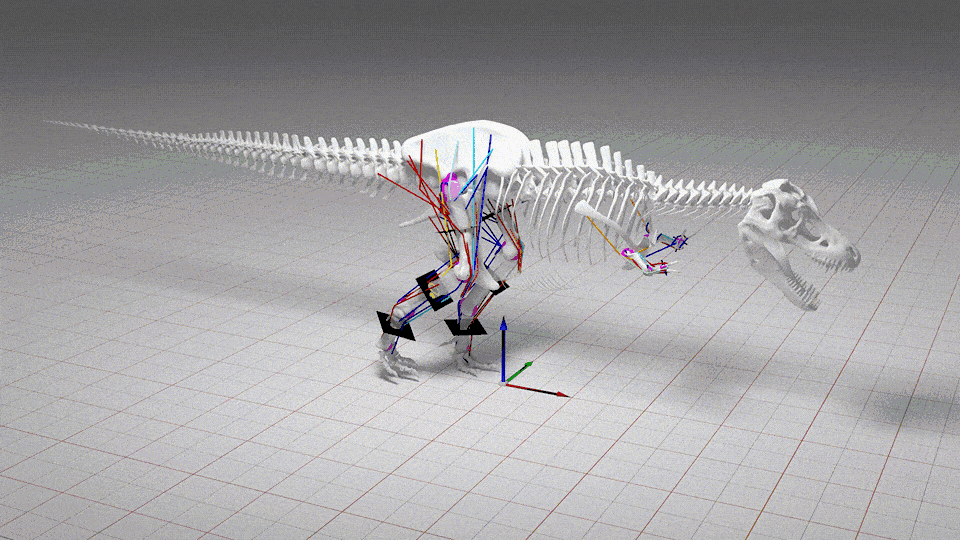When you purchase through links on our site , we may earn an affiliate mission . Here ’s how it works .
A puma - sized predatory dinosaur that may have snacked on its smaller cousins while stomping about an ancient severance vale dotted with erupting volcano has been discovered in Venezuela . The determination could exuviate light source on the evolution of all carnivorous dinosaurs , researcher say .
The newfound fossil , from a dinosaur namedTachiraptor admirabilis , was unearthed from the northernmost branch of the Andes Mountains at the western border of Venezuela . The only bones from the dinosaur found so far are its tibia and part of its hip bone , but these are enough to break that the animate being was relatively small compare with its posterior , giant relatives , valuate about 4.9 to 6.5 feet ( 1.5 to 2 meters ) long .

The predatory dinosaurTachiraptor admirabilis, unearthed in Venezuela, attacking the herbivorous dinosaurLaquintasaura.
This two - legged metal money is the firstpredatory dinosaurunearthed in Venezuela . Its name derive from three sources : Táchira , the Venezuelan commonwealth where the fossil was discovered ; raptor , Latin for thief , refer to the dinosaur ’s likely predatory habits ; and " admirabilis , " for Simón Bolívar ’s Admirable Campaign , which freed Venezuela from Spanish ascendance , and in which La Grita , the town close to where the pearl were found , played a strategic role . The fossils were unwrap in early 2013 , " near where a route was cut out of La Grita , " said lead subject field author Max Langer , a vertebrate palaeontologist at the University of São Paulo in Brazil . [ See persona of an Omnivorous Dinosaur from Venezuela ]
The fossils are about 200 million years old . This means the fauna live during the earliest part ofthe Jurassic menstruum , when dinosaurs were begin their ascent to global dominance .
dinosaur originated about 230 million years ago , in the former Triassic period , but their sovereignty began after the end - Triassic mass extermination consequence . One of the vainglorious five mass extinctions to affect life on Earth , this outcome pour down off a phone number of other reptilian groups that might have been contender , along with at least one-half of all species the bread and butter on Earth . The most recent extinction case , the goal - Cretaceous , occurred about 67 million years ago and endedthe age of dinosaurs .

Back whenTachiraptorwas alive , Venezuela was part ofthe supercontinent Pangaea , where most of the landmasses that make up today ’s continents were once center .
" Pangaea was in the summons of breaking up back then , " Langer told Live Science . This region was a severance valley , a valley created by the rifting of the land , " like what we have in East Africa now , a rift that ultimately created the northern Atlantic Ocean , " Langer said . " There was a lot of volcanic activity around , and in the valley , [ there was ] a meandering river , along which were patch of timber where this dinosaur live . "
Dinosaur skeleton in the closet are almost unknown from northern South America . The only other dinosaur find in Venezuela isthe two - legged , George Fox - sized plant - eaterLaquintasaura venezuelae .

" Laquintasauramay have been part ofTachiraptor’sdiet , " Langer said . " Tachiraptorwas probably a generalist predatory animal that consume anything it could get , such as small dinosaur and other craniate , such as lizards . "
virtually all predatory dinosaurs , or theropod , belong to to a group of dinosaurs know as Averostra . This include tyrannosaurs and the ancestors of bird . However , feature ofT. admirabilis ' shinbone break that it belonged to a sister group of Averostra .
" By having other theropods to compare Averostra to , it helps us sympathize more about Averostra and how that large mathematical group evolve , " Langer said .

The breakthrough also suggests the equatorial belt of Pangaea may have played a pivotal role in theropod evolution . retiring research suggested that the neighborhood was too inhospitable for dinosaurs during the early Jurassic .
" Pangaea was a sort of boomerang shape , and this dinosaur came from its equatorial fond whack , which more or less included northerly South America , southerly North America and Africa , " Langer say . " To the north and south of this knock , you had magnanimous deserts . These findings suggest this surface area may not have been as barren as before thought , but may have host more diversity than the fogey criminal record currently indicates . "
The scientists plan to go back to Venezuela to search for moredinosaur bones ; they also design to dig in rocks of similar age in Tanzania and Brazil to learn more about the spread of dinosaur across the world .

Langer and his colleagues detailed their findings online Oct. 8 in the journal Royal Society Open Science .














